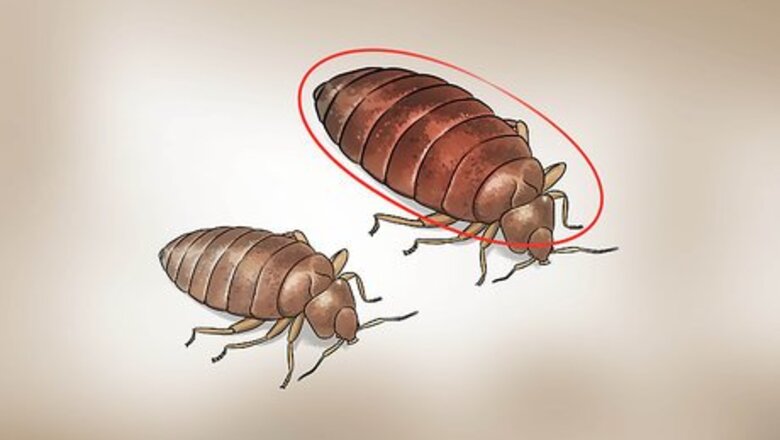
views
X
Research source
Bedbugs are not dangerous and don't typically transmit disease, though some people have allergic reactions to them or get secondary infections from scratching bites.[2]
X
Expert Source
Kevin CarrilloPest Control Specialist
Expert Interview. 22 October 2019.
You may even have an emotional reaction to the gross factor of bed bugs, which is completely normal. You can recognize bedbugs by identifying the insects and checking for other signs of them.
Identifying the Insects

Check for a flat, oval shape. Look at any bugs you find and see if the body has a flat and oval shape. Then check the thickness of the bug. Bedbugs are usually flat, oval-shaped, and about the thickness of a credit card. Adults are about the size of an apple seed and while juveniles are the size of a poppy seed, but both have the same shape and width. Bedbugs may be swollen and larger after feeding. Don't worry if you can't actually see the bedbugs - this is very typical. Infestations are usually diagnosed by the appearance of bites on a person's skin, not by seeing the bedbugs.
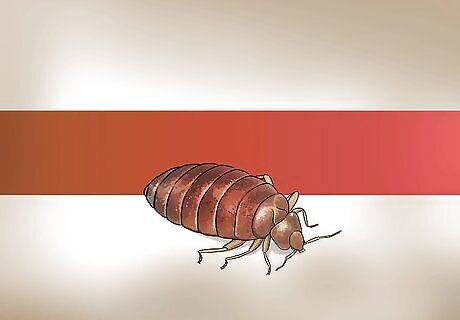
Determine a tan to red color spectrum. Look at the color of the bugs you see. They may range from reddish to a tan color. Adult bedbugs are usually a shiny, rusty red color. Juveniles are often a translucent tan color. Some bedbugs may even have darker spots on their back.
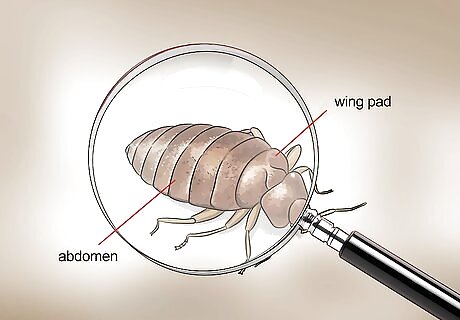
See if the bug has wings. Adult and juvenile bed bugs don't have wings. Check any bugs you see for visible wings or anything that folds onto their bodies. Avoid confusing the typical accordion-like folds on the bodies of adult and juvenile bedbugs for wings.
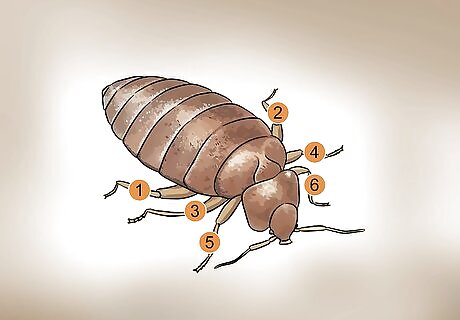
Count the bugs' legs. Check the bugs and figure out how many legs they have. Bedbugs have six legs. Their legs are usually closer to their heads and eyes. Avoid counting the two antennae as legs. You may need a magnifying glass to do this, as bedbugs are very small.
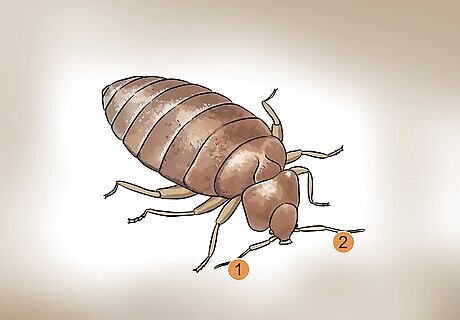
Identify two antennae. At the top of the bug's head, look for two antennae that protrude from near the eyes. The antennae will be shorter than the bedbug's legs.
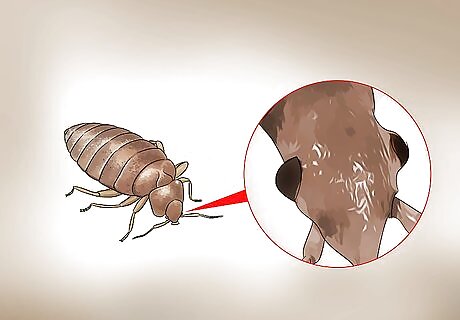
Observe two small eyes. Look at the front of the bug's body near the antennae. Bedbugs have small, dark and protruding eyes.
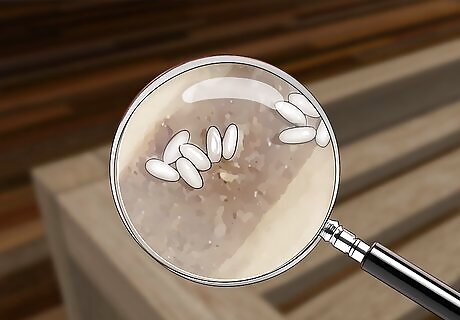
Use a magnifying glass to find bedbug eggs. If you find adult and juvenile bedbugs, use a magnifying glass to check the area for bedbug eggs or eggshells. Check for little brown or yellowish-white dots that are about the size of a grain of salt and an elongated shape. Look for the following other signs that can indicate bedbug eggs: Small specks that adhere to surfaces, like bedsheets, which you can't shake or brush off. If the eggs have already hatched, they'll leave eggshells on surfaces if already hatched.
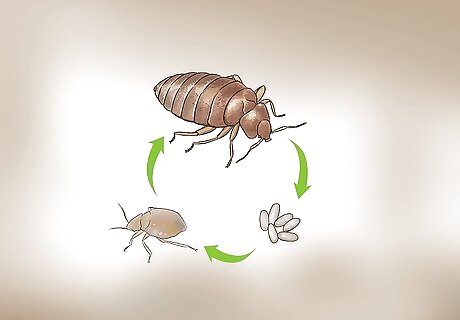
Recognize the developmental stages of bedbugs. Three developmental stages of bedbug may infest a space: adult, juvenile, and eggs. Each has a slightly different appearance, so looking for all three if you suspect an infestation can help confirm if you have bedbugs.
Checking for Other Signs of Bedbugs

Scan your skin for bite marks. Bedbugs are most active at night and you may wake up with itchy bites on any part of your skin. A bedbug can bite anywhere on your body, but your face, neck, arms, and hands are the most common spots. Bedbugs will often bite your feet first, both on the soles and on the tops of your feet. They may also bite folds of skin, such as around the armpit or groin. Check any itchy areas of your skin for the following signs: Red spot with darker red area in the middle Itching Bites or bumps arranged in a rough line or cluster Blisters or hives at the bite spot
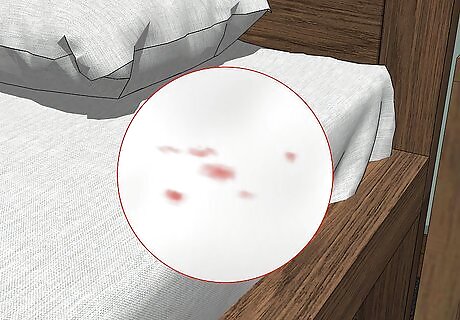
Inspect mattresses and textiles for reddish stains. Any time you clean or change linens or even suspect a bedbug infestation, look for reddish or rusty-colored stains. Check areas on which you sleep especially closely. These stains can indicate crushed bedbugs and may signal an infestation. Don't limit your inspection to clothing and bedding. Check your mattress, the fabric of furniture, suitcases, and any other places where bedbugs can quickly grab on to your skin for a meal. It's unlikely they'll be on your suitcase, but it's worth checking to be sure. If you're staying at a hotel, check the sheets of your bed. Stains will remain even after sheets have been washed well.
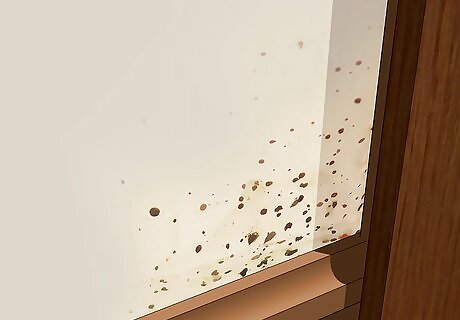
Identify signs of bedbug excrement. Look on white- or cream-colored textiles and furniture for dark spots that are about the size of a pencil head. See if the spots have bled out into the fabric. These may be bedbug excrement and signal an active infestation. It may be difficult to see these spots on colored furniture or in suitcases, due to their dark color.
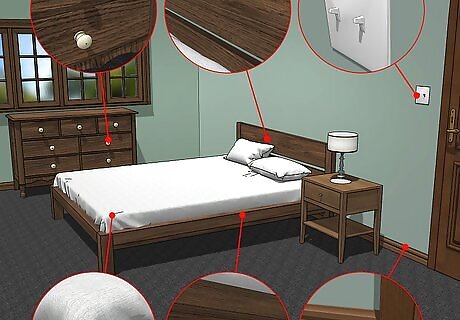
Detect bedbugs in their hiding spots. You may also recognize bedbugs by checking their typical hiding spots. This can not only help you identify a potential infestation but also what you should look for in other spaces of your home, office, or accommodations. Look in the following typical hiding places of bedbugs: Near piping Seams and tags of mattresses and box springs Bed frames and headboards Seams of chairs, couches, and between cushions Folds of curtains Drawer joints Electrical appliances
















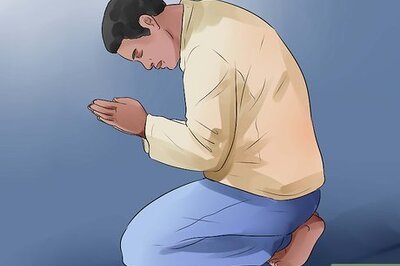



Comments
0 comment